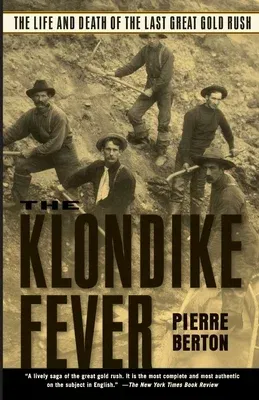Pierre Berton
(Author)The Klondike Fever: The Life and Death of the Last Great Gold RushPaperback, 1 December 2003

Qty
1
Turbo
Ships in 2 - 3 days
In Stock
Free Delivery
Cash on Delivery
15 Days
Free Returns
Secure Checkout

Print Length
457 pages
Language
English
Publisher
Basic Books
Date Published
1 Dec 2003
ISBN-10
0786713178
ISBN-13
9780786713172
Description
Product Details
Author:
Book Format:
Paperback
Country of Origin:
US
Date Published:
1 December 2003
Dimensions:
21.08 x
13.97 x
4.06 cm
Genre:
Canadian
ISBN-10:
0786713178
ISBN-13:
9780786713172
Language:
English
Location:
New York, NY
Pages:
457
Publisher:
Weight:
430.91 gm